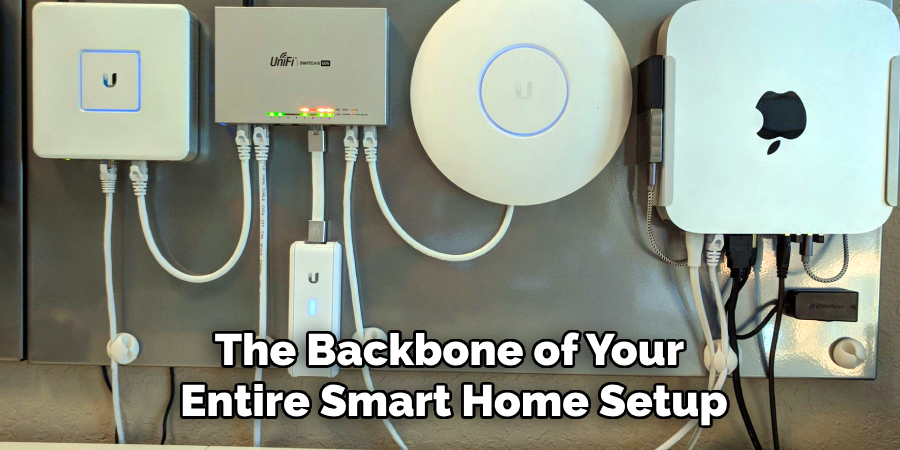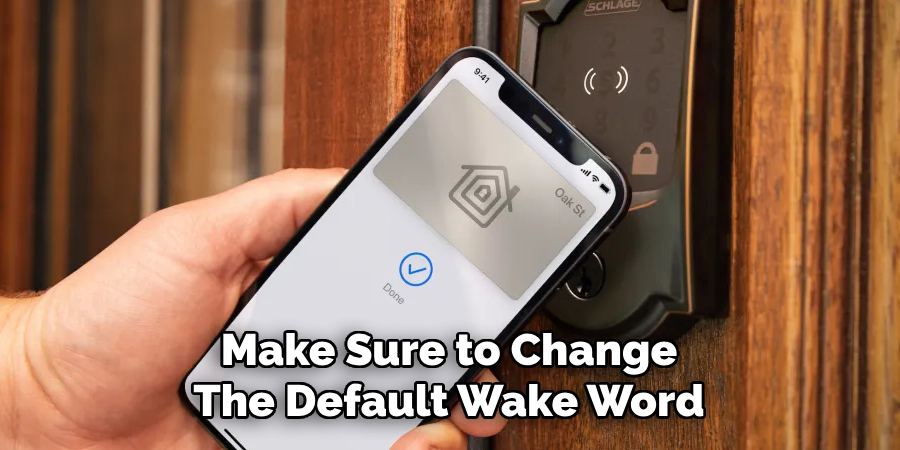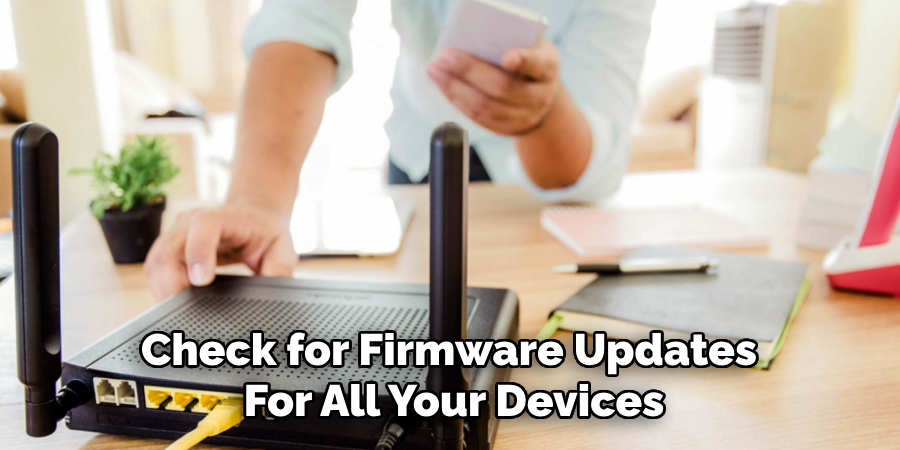Securing a smart home network is essential in today’s connected world. With the proliferation of smart devices such as thermostats, cameras, and voice assistants, ensuring the safety and privacy of your home network has never been more critical. While these devices bring convenience and innovation to daily life, they can also pose significant risks if not properly protected. Cybercriminals may exploit vulnerabilities in your network to gain unauthorized access to personal information or even take control of devices. By implementing effective security practices, you can safeguard your smart home and enjoy peace of mind in a digitally connected environment.

In this article on How to Secure a Smart Home Network, we will discuss the steps you can take to protect your smart devices and maintain a secure network. From securing your router to managing device permissions, we will cover all the essential aspects of smart home security.
Needed Tools and Materials
Before we dive into the steps, it’s important to have the right tools and materials for securing your smart home network. Here are some items you may need:
A Secure Router:
Your router is the gateway to your home network, making it a prime target for cyber attacks. Make sure to choose a router that has up-to-date security features and strong encryption protocols.
Firewall:
A firewall acts as an extra layer of defense against malicious traffic. It can be hardware or software-based and helps prevent unauthorized access to your network.
Strong Passwords:
Having strong, unique passwords for all your smart devices and accounts is crucial in securing your network. Avoid using easily guessable combinations and consider using a password manager to keep track of them.
Regular Updates:
Make sure to regularly update the firmware for all your devices. These updates often include security patches that address any known vulnerabilities.
8 Steps on How to Secure a Smart Home Network
Step 1: Secure Your Wi-Fi Network
The first step in protecting your smart home is securing your Wi-Fi network as it forms the backbone of your entire smart home setup. Start by changing the default name and password of your Wi-Fi network. Default settings are often easy targets for hackers, as they can be publicly known. Use a complex and unique password that combines letters, numbers, and special characters to make it harder to guess.

Next, enable WPA3 encryption (or WPA2 if WPA3 is unavailable) in your router settings. Encryption ensures that any data transmitted over your network is protected from unauthorized access. Additionally, disable features like WPS (Wi-Fi Protected Setup) that may introduce vulnerabilities.
Step 2: Create a Guest Network
Creating a guest network is an effective way to separate your smart devices from the rest of your household’s internet usage. Guest networks provide a separate Wi-Fi connection for visitors, preventing them from accessing your primary network where your smart devices are connected. This additional layer of separation helps protect your main network from potential security risks that could be introduced via your guests’ devices.
To set up a guest network, access your router’s settings and look for the guest network option. Enable it and assign a unique name and password. Just like your primary network, the guest network should also have strong encryption protocols enabled, such as WPA3 or WPA2. By keeping your smart devices on your main network and reserving the guest network for visitors, you can limit access points and enhance overall security.
Step 3: Use a VPN
A Virtual Private Network (VPN) encrypts your internet traffic and routes it through a secure server, making it difficult for hackers to intercept any data. Using a VPN is especially important if you access your smart home network remotely. It adds an extra layer of protection when connecting to your home network from outside locations.
But not all VPNs are created equal. When selecting a VPN, make sure to choose one with strong encryption protocols and a strict no-logs policy. Additionally, check for compatibility with your smart home devices before purchasing.
Step 4: Secure Your Voice Assistants
Voice assistants like Amazon’s Alexa or Google Assistant have become popular features in many smart homes. However, they can also be potential security risks if left unsecured. To protect your privacy, make sure to change the default wake word of your voice assistant to something unique that only you know.

Also, disable any unnecessary skills or features that may pose security risks. Finally, review and delete any past recordings from your voice assistant as they may contain sensitive information.
Step 5: Enable Two-Factor Authentication
Enabling two-factor authentication (2FA) adds an extra layer of security to your smart home devices and accounts. It requires a second form of verification, such as a code sent to your phone or email, before granting access.
This makes it harder for cybercriminals to gain unauthorized access, even if they have your password. Many smart home devices and accounts now offer 2FA as an option, so make sure to enable it wherever possible.
Step 6: Manage Device Permissions
As you add more smart devices to your network, it’s essential to keep track of their permissions and access levels. Only give devices and apps the necessary permissions they require to function properly. For example, a smart thermostat does not need access to your camera or microphone. Regularly review and revoke unnecessary permissions to reduce potential points of entry for hackers.

It’s also a good practice to assign unique usernames and passwords to each of your devices, especially if they can be accessed remotely. This adds an extra layer of protection in case one device is compromised.
Step 7: Be Wary of Third-Party Devices
When purchasing new smart home devices, make sure to research the company and product beforehand. Look for reviews or security audits that have been done on the product and its manufacturer. Avoid buying from unknown or untrustworthy sources as they may introduce potential vulnerabilities into your network.
Additionally, regularly check for firmware updates for all your devices, including third-party ones. If a manufacturer is not actively releasing updates, it could be a red flag indicating their lack of commitment to security.

Step 8: Regularly Check for Suspicious Activity
Finally, it’s important to keep an eye out for any unusual or suspicious activity on your network. Monitor your router logs and device activity regularly. If you notice anything out of the ordinary, such as devices connecting without your permission or increased bandwidth usage, investigate further and take the necessary actions to secure your network.
By following these steps on How to Secure a Smart Home Network, you can help ensure that your smart home network remains secure from potential cyber threats. Remember to regularly review and update your security measures as technology advancements and new vulnerabilities are discovered. With proper precautions in place, you can enjoy the convenience and comfort of a smart home without compromising on its security.
Do You Need to Get Support From a Professional?
While taking steps to secure your smart home network on your own is essential and effective, there may be times when seeking professional help is beneficial. A professional can perform a thorough assessment of your setup, identify potential vulnerabilities, and recommend advanced solutions tailored to your needs. This is especially useful if you have a complex network with numerous devices or if you lack the technical expertise to implement certain security measures.
Additionally, professionals can assist in installing and configuring firewalls, advanced VPNs, or other specialized security tools. They can also help with ongoing monitoring and maintenance of your network to ensure it stays secure as new devices are added or technologies evolve. If privacy and security are a top priority for you, consulting a professional can provide peace of mind and ensure that your smart home remains as secure as possible.
Frequently Asked Questions
Q1: What is the Purpose of Securing Your Smart Home Network?
Securing your smart home network helps protect your personal information, privacy, and devices from potential cyber threats. It also ensures that your network remains stable and functions properly.
Q2: What are Some Common Security Risks for Smart Home Networks?
Some common security risks for smart home networks include weak or default passwords, outdated firmware, unsecured Wi-Fi networks, and unauthorized access to devices.
Q3: Why is Updating Firmware Important?
Updating firmware regularly helps fix any bugs or vulnerabilities that may have been discovered since the device was released. It also adds new features and improves performance.
Q4: Can I Secure My Smart Home Network without Technical Knowledge?
Yes, by following some basic security measures such as using strong passwords, enabling 2FA, and keeping your devices up-to-date, you can secure your smart home network without technical knowledge. However, it is always recommended to seek professional help if you are unsure about any security measures.
Conclusion
In conclusion, securing your smart home network is crucial to protect yourself and your family from potential cyber threats. By following these steps on How to Secure a Smart Home Network, you can significantly reduce the risk of unauthorized access and keep your personal information safe.
Remember to always prioritize security when setting up and managing your smart home devices, and regularly review and update your measures to stay ahead of potential vulnerabilities. With a little effort, you can enjoy the convenience of a smart home while keeping it secure. So, continue using these security measures to ensure the safety of your smart home network for years to come.

